Connecting to the UCL VPN with macOS 11 (Big Sur),12 (Monterey), 13 (Ventura) or 14 (Sonoma)
This guide explains how to connect to the UCL Virtual Private Network (VPN) which will enable you to access to a variety of UCL services and resources from outside of UCL.
This guide is aimed at...
- Staff
- Students
- IT Administrators
- SLMS staff
- Researchers
Before you start...
- You must be aware of and abide by the UCL Computing Regulations
- You must be aware of and abide by the JANET Acceptable Use Policy
- You need your UCL user ID & password – found on the front of your registration slip
- An internet connection outside the UCL network e.g. from home
- A Mac with anti-virus installed (see Anti-virus requirements)
Anti-virus requirements
An anti-virus is required to access the UCL VPN service.
For home/personal machines we recommend WithSecure (available for free to students and staff from UCL's Software Database)
For UCL-owned machines we recommend WithSecure (available from UCL's Software Database)
Instructions
If you have already completed the Installing the Cisco AnyConnect Secure Mobility Client steps you can skip to Connecting to the UCL VPN.
Installing the Cisco AnyConnect Secure Mobility Client
Please note: You are installing the application onto your machine/device and configuring the client entirely at your own risk and no guarantees can be made that they will work.
- Download the Cisco AnyConnect Secure Mobility Client installation file (your UCL user ID and password may be required)
- When prompted, choose Open with or Save File (options depend on which web browser you are using)
- If the installation file does not mount automatically, open the file from the location it was saved and double-click to mount
- Double-click the AnyConnect.pkg file to begin the installation process (Fig.1)
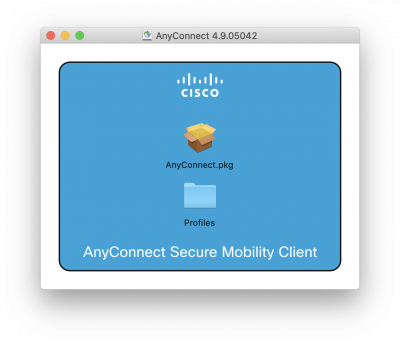
- Click Continue on the Welcome and License Agreement windows (Fig.2)
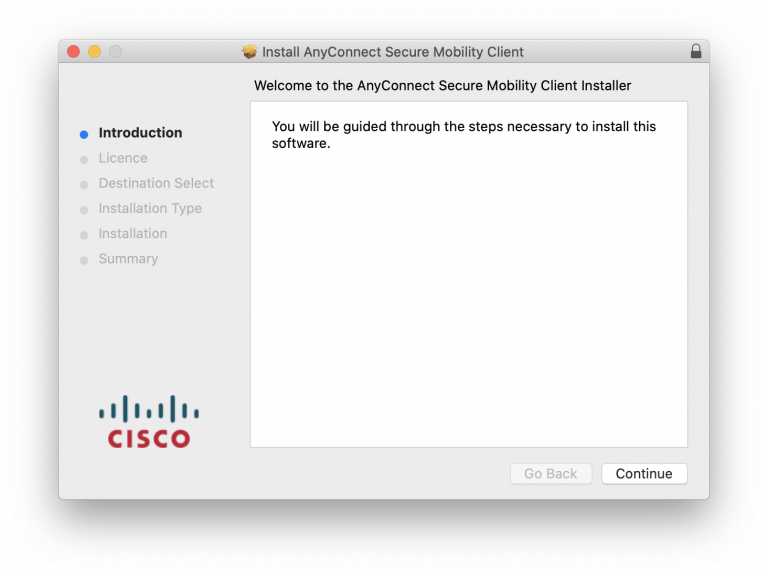
- Agree to the terms of the software licence agreement (Fig.3)
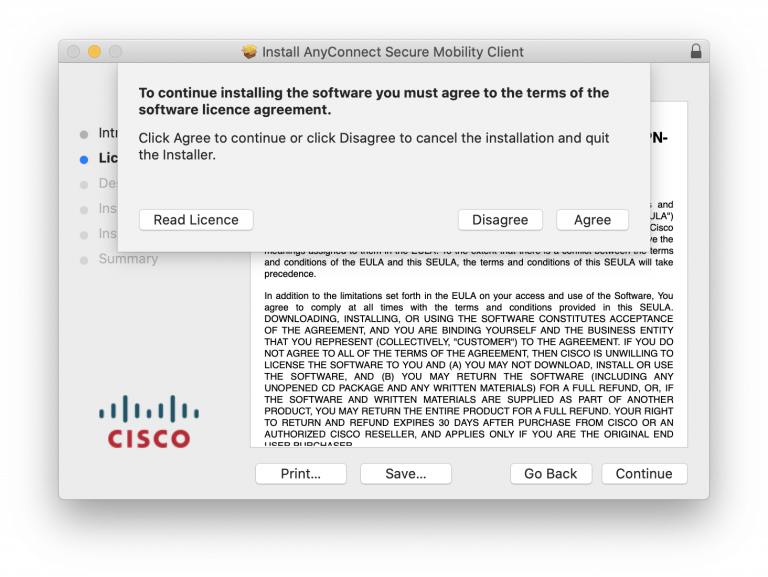
- Ensure only VPN and Posture are selected and click Continue (Fig.4)
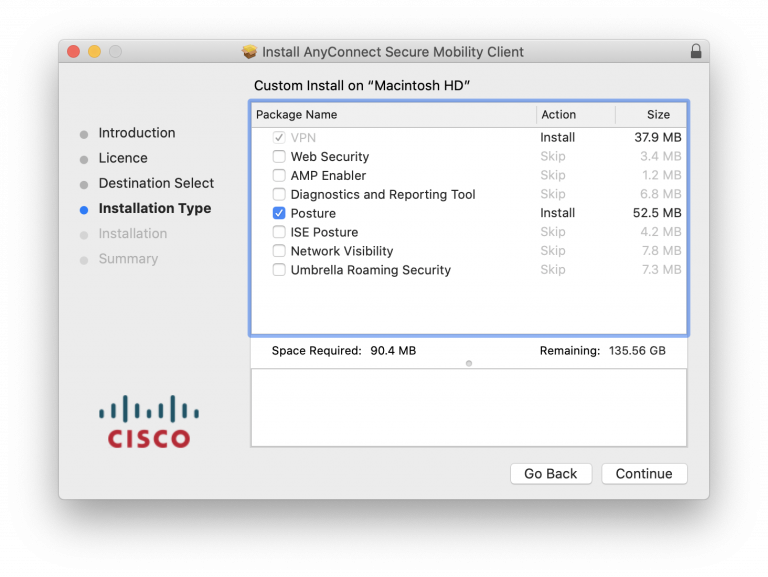
- Click Install to start installing the AnyConnect Secure Mobility Client (Fig.5)
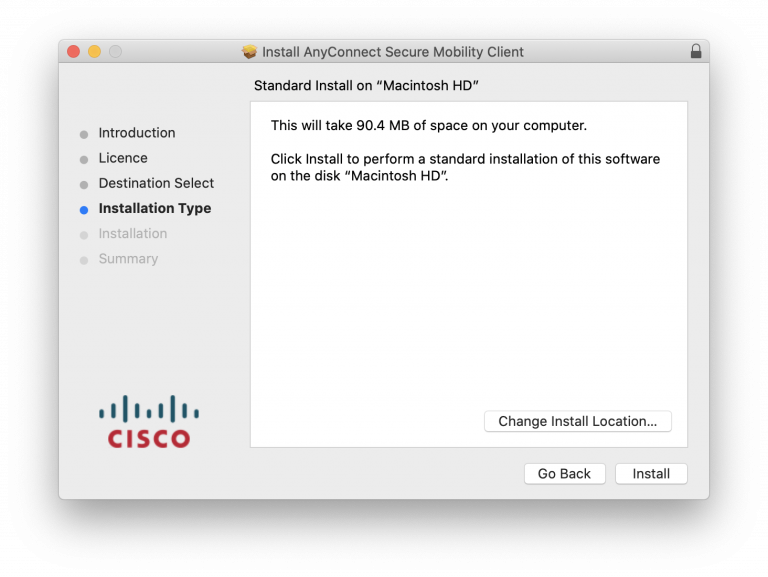
- You will be prompted for a password. This is your local computer password and not your UCL user ID and password.
- A System Extension Blocked (Fig.6) and Attention Required window (Fig.7) will open
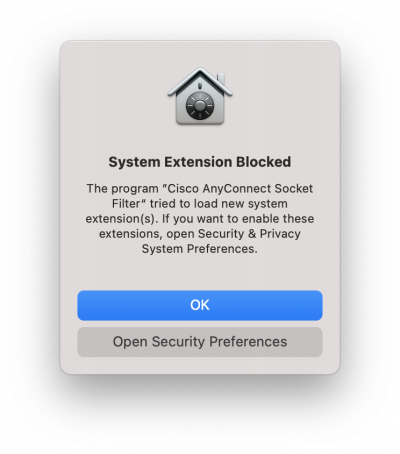
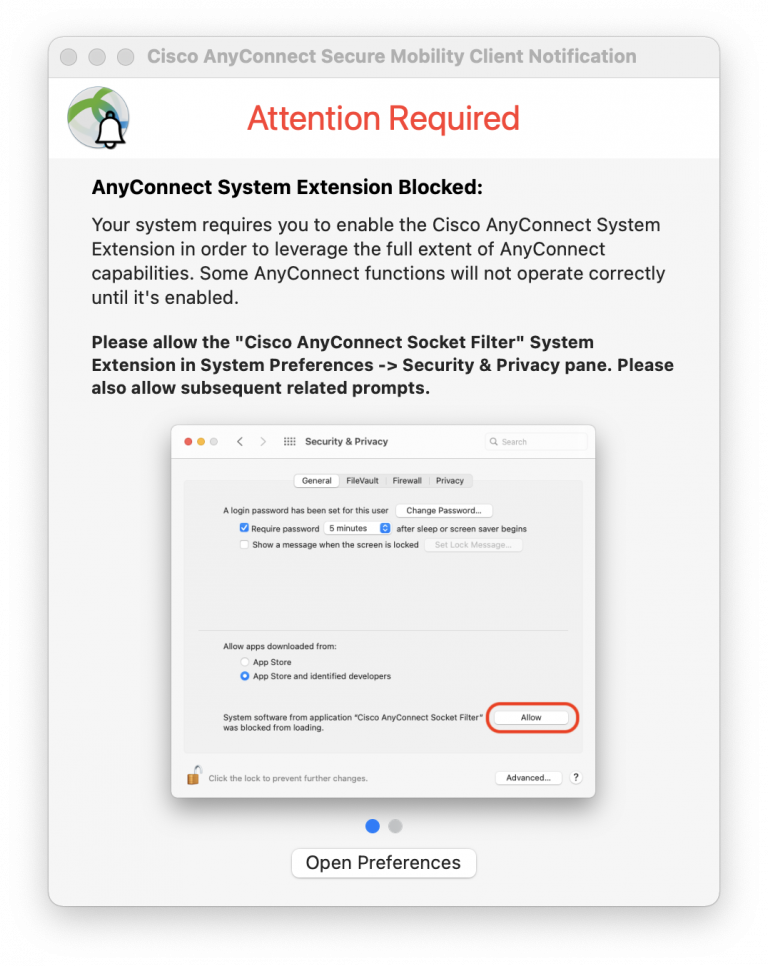
- Read the Attention Required window and click Open Preferences
- If locked, click on the padlock in the lower left corner to make changes then click Allow next to System software from application “Cisco AnyConnect Socket Filter" was blocked from loading (Fig.8)
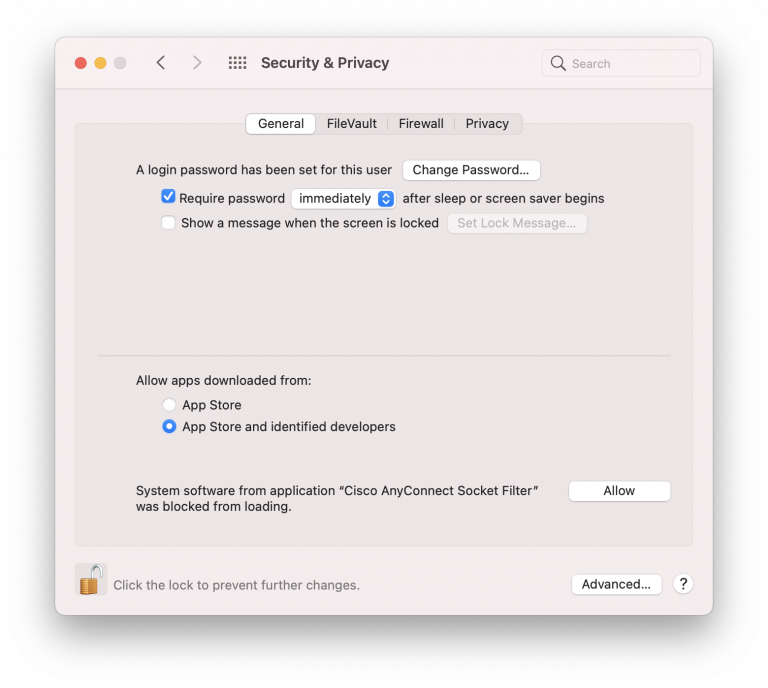
- Click Allow on the "Cisco AnyConnect Socket Filter" Would Like to Filter Network Content window (Fig.9)
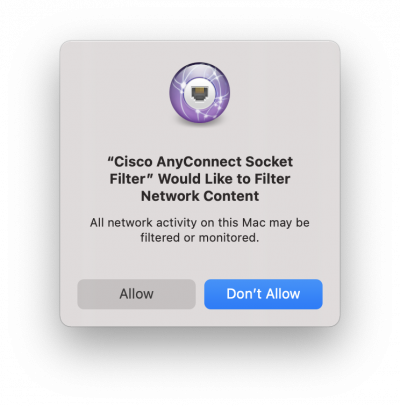
- Click Dismiss on the System Extension Enabled window (Fig.10)
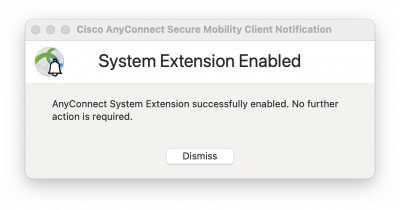
- Cisco AnyConnect and the System Extension have now been successfully installed. You can click OK on System Extension Blocked window and Close on The installation was successful window (Fig.11)
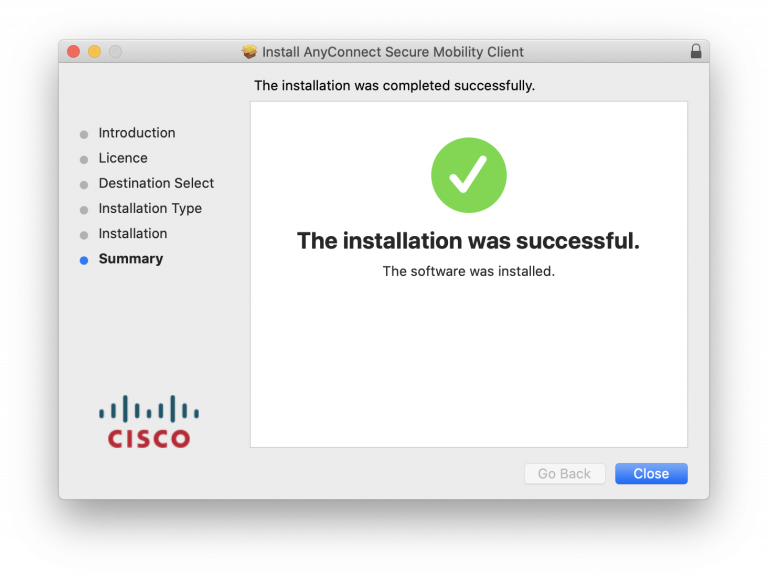
Connecting to the UCL VPN
- Open Cisco AnyConnect by going to Applications > Cisco > Cisco AnyConnect Secure Mobility Client from the Finder or by searching "Cisco AnyConnect" from Spotlight (command + spacebar)
- In the server address box (Fig.7), enter vpn.ucl.ac.uk and click Connect
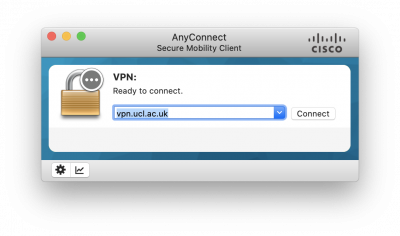
- You will be prompted for your username and password (Fig.8)
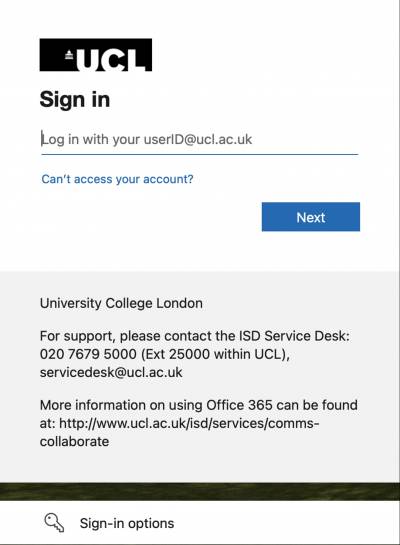
Enter the following details:
Group: RemoteAccess
Username: Your UCL userID@ucl.ac.uk
Password: Your UCL passwordThe Remote Access VPN now uses Multi Factor Authentication (MFA), this provides additional security and means you won’t have to enter your credentials every time you log in.
There are more details on how MFA works on the link below: https://www.ucl.ac.uk/isd/services/stay-secure/multi-factor-authentication-mfa
- If you do not have an anti-virus installed or your anti-virus has been disabled/is not up to date you will receive a Login denied message. Please ensure your computer meets the anti-virus requirements before attempting to connect again.
- If your computer meets the anti-virus requirements you will receive a notification saying you are connected to vpn.ucl.ac.uk (Fig.9) The Cisco AnyConnect icon in the menu bar will also display with a padlock (Fig.10) You will now be able to access services (e.g. MyHR and MyFinance) that are not available outside the UCL network.


- To disconnect from the UCL VPN click the Cisco AnyConnect icon in the menu bar and select Disconnect (Fig.11)
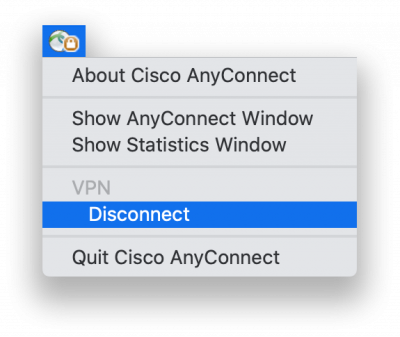
- The icon in the menu bar will now display without a padlock (Fig.12)

- For subsequent connections to the UCL VPN click on the Cisco AnyConnect icon in the menu bar and select Connect (Fig.13)
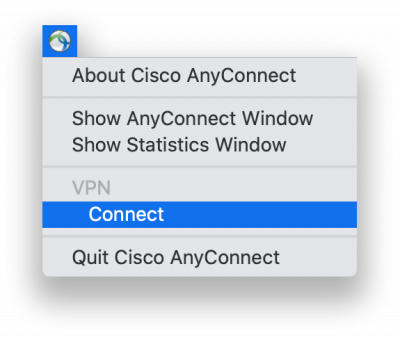
Help and support
Feedback
We are continually improving our website. Please provide any feedback using the feedback form.
Please note: This form is only to provide feedback. If you require IT support please contact the IT Services Help desk. We can only respond to UCL email addresses.
 Close
Close

